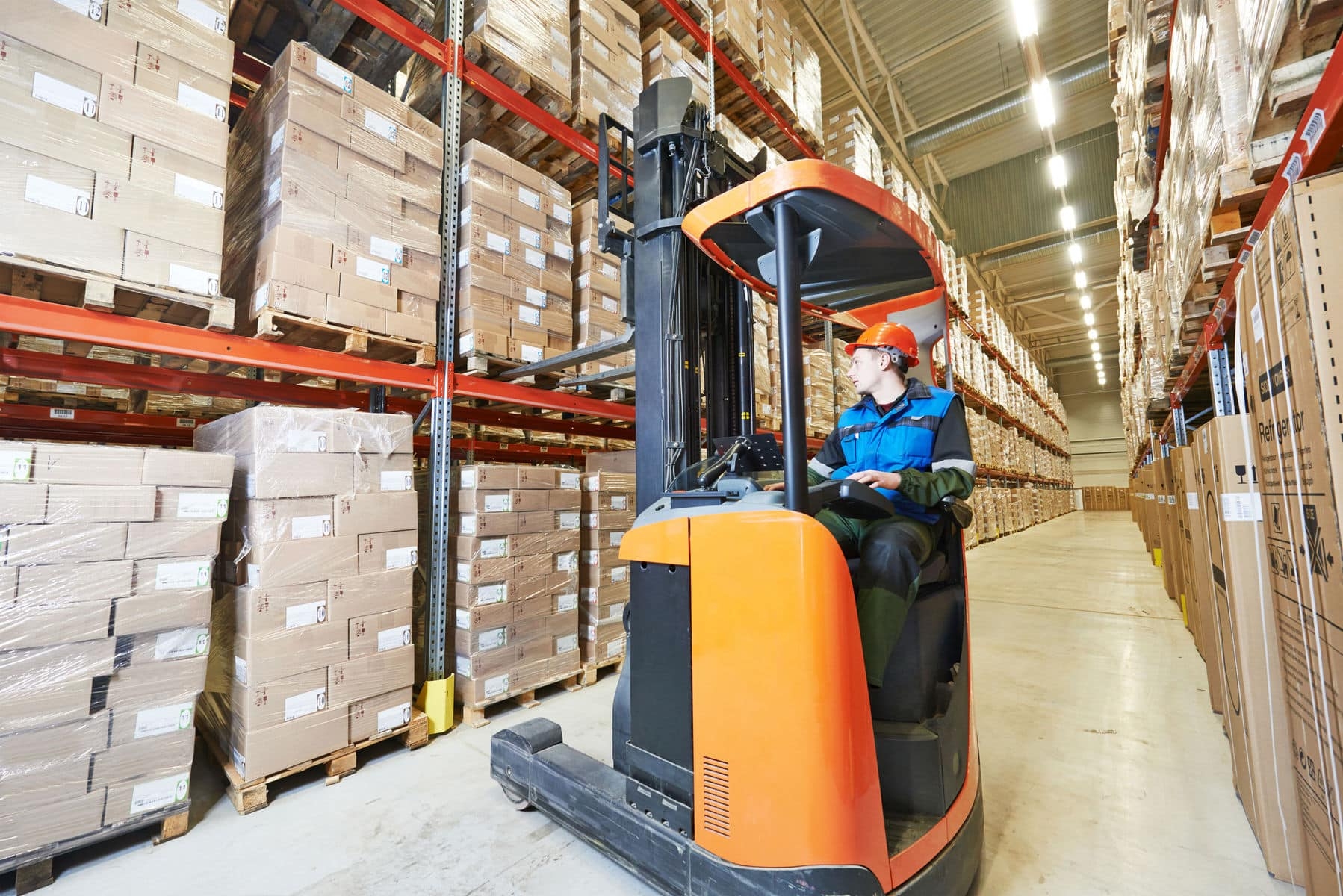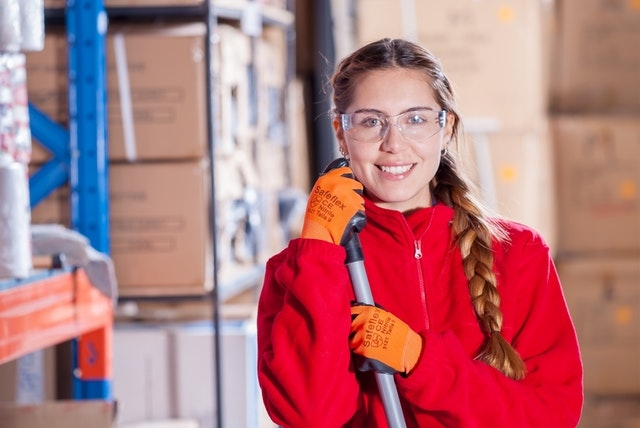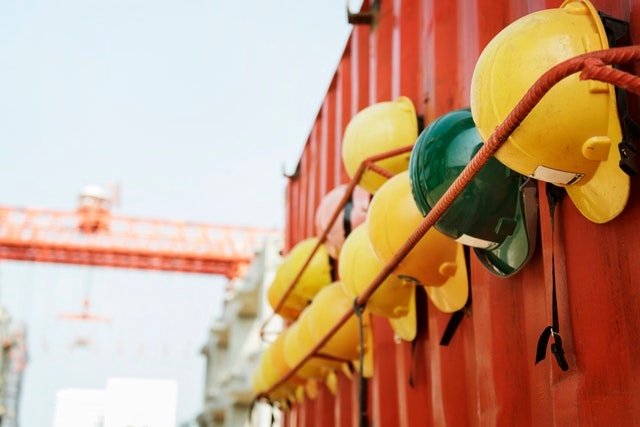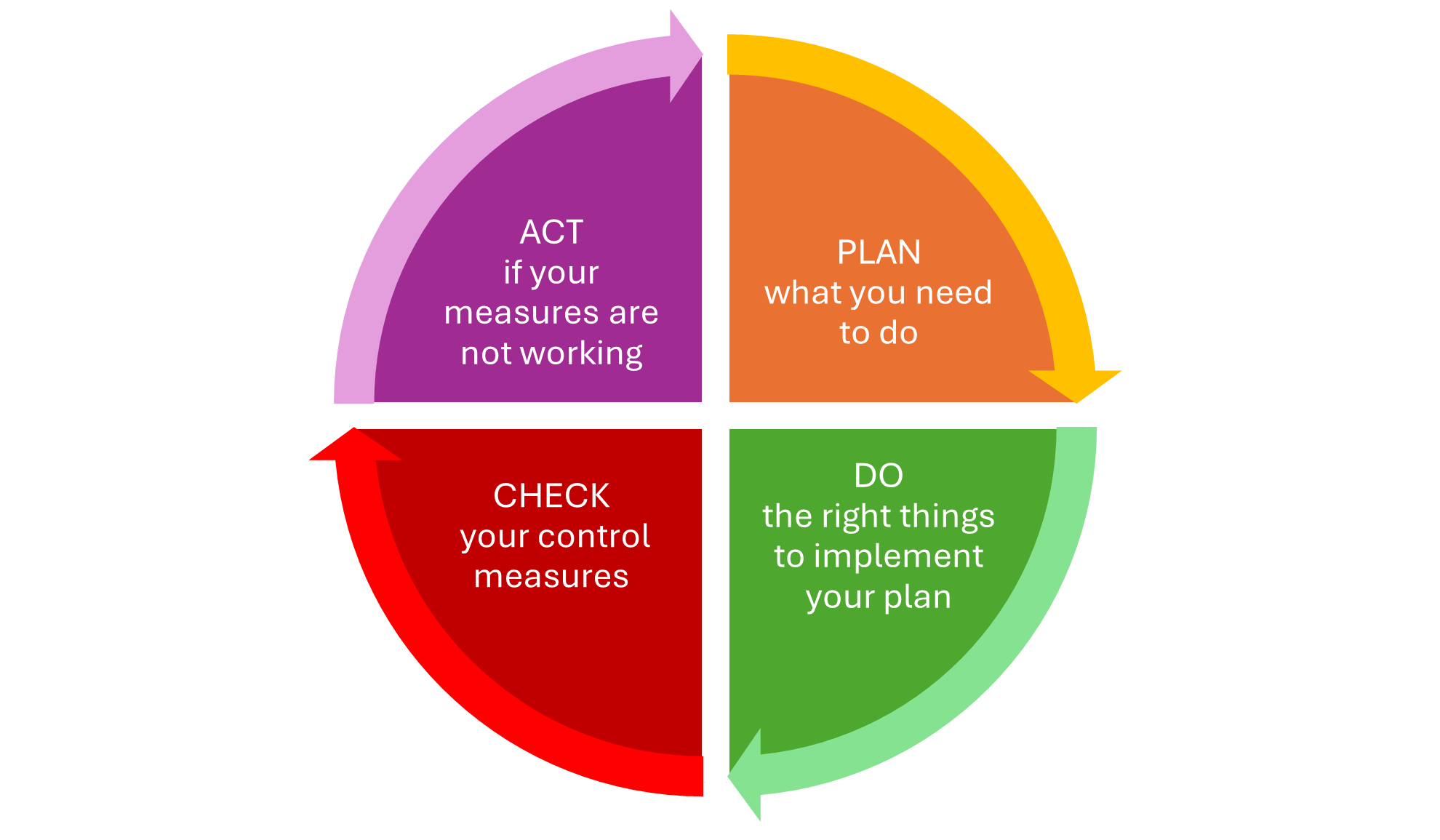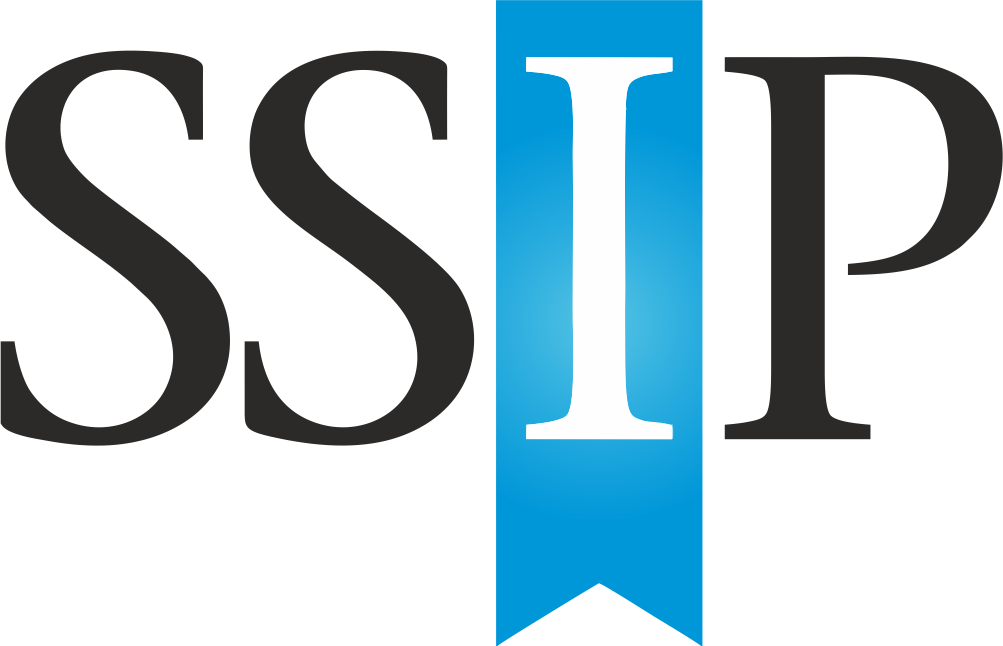As H&S Consultants, we often visit Motor Vehicle Repair (MVR) premises which have particular dangers that require employers to minimise the risks to health and safety.
MVR premises use a wide range of work equipment that is invaluable to the business. In this article we will try and highlight effective guidance on how you can minimise risks by focusing on the legal requirements of two key pieces of legislation, LOLER (Lifting Operations Lifting Equipment Regulations) and PUWER (Provisions and Use of Work Equipment Regulations).
Our visits to these premises frequently identify breaches of the regulations and many of these breaches are due to business owners and managers not knowing or understanding their legal duties to comply with H&S Law and the duty of care they have to their employees.
These regulations are not just specific to the MVR sector they apply to any workplace that use Lifting Equipment (or involved in Lifting Operations) or use any type of Work Equipment or Machinery, which means this article will not just benefit MVR premises but any premise that must comply with the legal requirement with these regulations.
What is LOLER?
LOLER is a set of H&S regulations introduced under the Health and Safety at Work Act to help minimise the Health and Safety risks associated with the use of lifting equipment which is also subject to the requirements of PUWER.
If you are the owner or manager of a business, you have a duty of care to ensure the lifting equipment in your workplace complies with the following key points:
- The equipment is marked with the manufacturers Safe Working Load (SWL) and is suitable for the intended applications set out by the manufacturer.
- Lifting equipment is placed in a suitable position and installed by a competent person.
- Lifting equipment should only ever be used in a safe and proper manner in accordance with the manufacturer’s specifications; and
It is this final point and arguably the most important, that we find to be a common reason for breach of LOLER in MVR workplaces.
Are Vehicle Lifts Covered by LOLER?
The answer is yes. LOLER applies to all equipment used by employees for lifting in your workplace. The Law requires employers to ensure:
- All lifting applications are only ever carried out by trained operatives in a safe and professional manner.
- When a new vehicle lift has been installed into your business premises prior to using it that you are in receipt of an installation certificate from a trained and competent lift installation engineer who certifies the lift as safe for use.
- That lifting equipment is examined at regular periods ensuring that all working parts are free from damage and safe to use, this is usually conducted by an external company of vehicle lift installation engineers.
- That the findings of periodic vehicle lift inspections by a trained, competent engineer are documented and that a report is submitted by the competent person to the employer/manager to take recommended remedial action.
- That suitable and sufficient risk assessments specific to your workplace and work equipment are carried to identify the potential hazards that are presented within the workplace and that all reasonable steps have been implemented to effectively reduce such hazards.
Enforcement of the Regulations of LOLER
Inspectors from the UK enforcement authority the Health and Safety Executive (HSE) enforce the Regulations, but their main role is to advise and guide employers if they feel the employer needs assistance in their duty of care. They will of course use their powers of enforcement if they identify material breaches in the regulations.
Action by the HSE could be in the form of informal notices, formal notices by way of improvements and prohibitions and prosecution in the event of serious breaches. In either case these actions will involve financial costs to a business from business down-time, Fee for Intervention (FFI)* costs, increased insurance premiums, fines and legal costs. Individual prison sentences could also result if guilty in a court of law for serious breaches.
*FFI: If the HSE visit your workplace and find that you are in material breach of health and law, you will have to the pay for the time it takes the enforcement officers to identify what is wrong and to help you rectify the breach (s).
At the time of drafting this article, the cost of FFI was £166 per hour which will include the costs of the time of the entire original visit. The total amount recovered will be based on the amount of time it takes the HSE to identify the breach and help the employer put things right (including associated office work), multiplied by the hourly rate. Source: Health and Safety Executive website.
Record Keeping and LOLER
Earlier we explained how it was a legal requirement to ensure lifting equipment was subject to regular and periodic inspection by competent lifting equipment engineers with related documentation retained for two years. This means that you are legally required to ensure formal reports of thorough examinations are kept available for consideration and examination by enforcements officers for at least two years or until the next report, whichever is longer.
These reports may be kept electronically.
They are other reasons and benefits to being able to demonstrate legal compliance by producing documented evidence of compliance (i.e., inspection certification), these include:
- Insurance premium increases kept to a minimum as part of an insurance assessment.
- Supporting evidence as part of a H&S or other form of Accreditation application.
Additionally, in the event of not being able to make records available as part of a H&S Audit can be deemed as a non-compliance by the auditor and could well be recorded as such in the audit report.
Provision and Use of Work Equipment Regulations (PUWER)
As highlighted earlier, MVR businesses are required to comply with the requirements of PUWER hand in hand with LOLER. This section therefore is aimed at providing advice on how apply the regulations not only in MVR related businesses but all relevant businesses who use work equipment.
As a H&S Consultancy, Wirehouse Employer Services are often asked by our clients who are in the MVR industry and other sectors who use work equipment, how these regulations affect them. These enquires are often in connection with the need to carry out examination and inspection of equipment.
Bear in mind, compliance with the regulations is very important, however overall effective H&S Management in terms of procedures formulated and implemented incorporating thorough examination and inspection of equipment have an extremely important role to play.
So, to expand on this, let’s firstly have a look at some relevant PUWER regulations.
Operator Pre-use Checks: PUWER Regulation 4 (Suitability of Equipment)
- This includes compulsory requirements for daily visual and physical pre-use checks of work equipment.
Maintenance: The Maintenance Requirements of Work Equipment Under PUWER Regulation 5 requires that employers:
- Ensure their work equipment is maintained in safe working condition, in efficient working order and in a good state of repair; and
- Ensure that work-related machinery has a record of maintenance, and these records are kept up to date.
Equipment Inspection – PUWER Regulation 6 and Thorough Examination and Inspection – LOLER regulation 9:
- Although we’re talking about two individual regulations from two different sets of regulations, they should be seen as related where applicable, under your legal requirements.
By now it should be becoming clear that the aim and the legal framework of LOLER and PUWER work hand in hand.
Think about PUWER as dealing with the non-lifting aspects of work equipment and LOLER deals with lifting aspects from initial installation of vehicle lifts and other lifting equipment, the way in which lifting operations are carried out and thorough examination requirements.
Like many other H&S regulations, LOLER and PUWER are risk-based guidelines, placing importance on conducting suitable and sufficient risk assessments to help determine the nature and frequency of maintenance and inspection procedures.
If you are a Wirehouse Employer Services client with the H&S Service and need advice, guidance or information on maintenance and inspection frequencies e.g., daily, weekly, monthly, six monthly and annually by a trained competent person you can contact the Safety Advice Team at safetyadvice@wirehouse-es.com
PUWER and the Motor Vehicle Repair Industry
All equipment used at work ('work equipment') is covered under PUWER. Equipment that is not owned by the business but being used by it as part of their work activities for example a tool owned by an employee, a borrowed tool or a customer's bottle jack, is also covered and is the direct responsibility of the operative to ensure that it fully complies with all legal requirements under the PUWER regulations.
PUWER requires that work equipment be suitable for the purpose to which it is intended. Machinery that features the ‘CE mark’ should be accompanied by an instruction manual which contains information on the normal conditions of use and technical abilities of the machine such as safe working loads and parameters.
All risk assessments undertaken should meet with the requirements of the Management of Health and Safety at Work Regulations 1999 (Management Regulations) Regulation 3, risk assessments should seek to clearly identify any significant risks posed by the use of the work equipment.
Where a regular inspection and maintenance regimes would address such risks, e.g., failure of machinery components through general wear and tear, then PUWER or LOLER regulations would require periodic inspections and/or thorough examination.
The requirement for a comprehensive review also applies before the equipment is commissioned for initial use or it is being relocated to other premises or placed in another part of the workshop relocation and also following exceptional circumstances (e.g., following collision damage to a vehicle lift).
PUWER requires that work equipment that is or could be exposed to adverse conditions which may contribute to its overall deterioration is subjected to thorough inspections at periods determined by risk assessment, ensuring the equipment is adequately maintained and any deterioration detected and remedied within a reasonable timeframe.
Motor Vehicle Repair Equipment PUWER/LOLER
The following points highlight the common work equipment used in the MVR industry and briefly describe how PUWER/LOLER affect them.
Vehicle Lifts and LOLER
All types of vehicle lifts are subject thorough examination under LOLER and if persons are not elevated in the vehicle on the lift the regulations would recommend regular inspections are carried out at least every 12 months.
However, where there is cause for people to be elevated on the lift or where persons routinely work below the lift then a thorough inspection of the lift and its components should be conducted every six months.
Alignment Jigs
Body alignment jigs share many characteristics with vehicle lifts therefore similar considerations apply, however given that people generally do not regularly work under them, then this type of work equipment will require a 12 monthly periodic inspection.
Trolley/Bottle Jacks
Many serious accidents, some of them fatal involving this type of work equipment have occurred over the years as a result of the equipment failing while people are working under the vehicle. As far as the law is concerned, when portable trolley/bottle jacks are used, they should be considered as lifting equipment and subject to thorough inspections by a trained competent person every 12 months if no one works beneath the vehicle and every 6 months if people do work under the vehicle.
Recovery Vehicles
If you are in the MVR industry and use a low loader for picking up customer vehicles that have broke down and need to be transported to your garage and your recovery vehicle has a lifting device, then it subject to the requirements of LOLER and PUWER.


